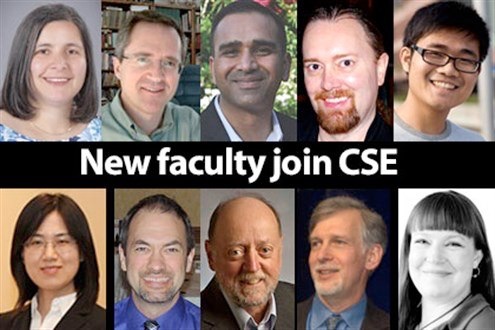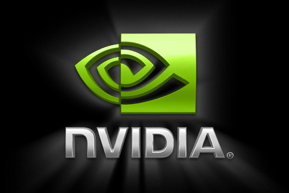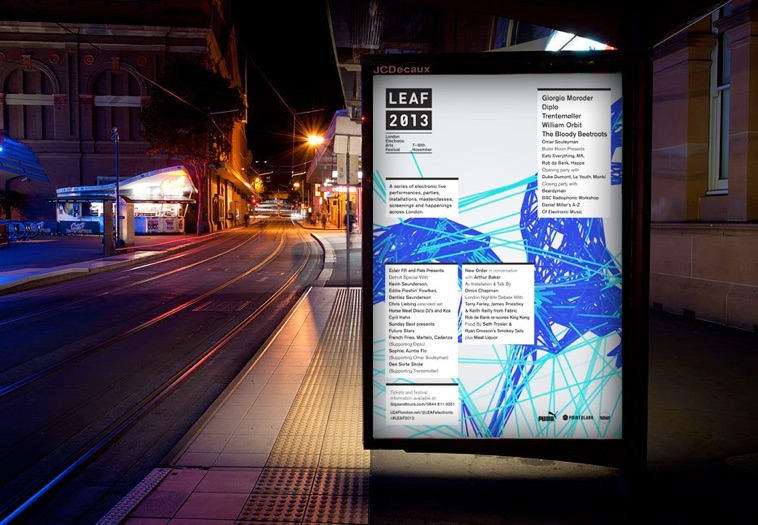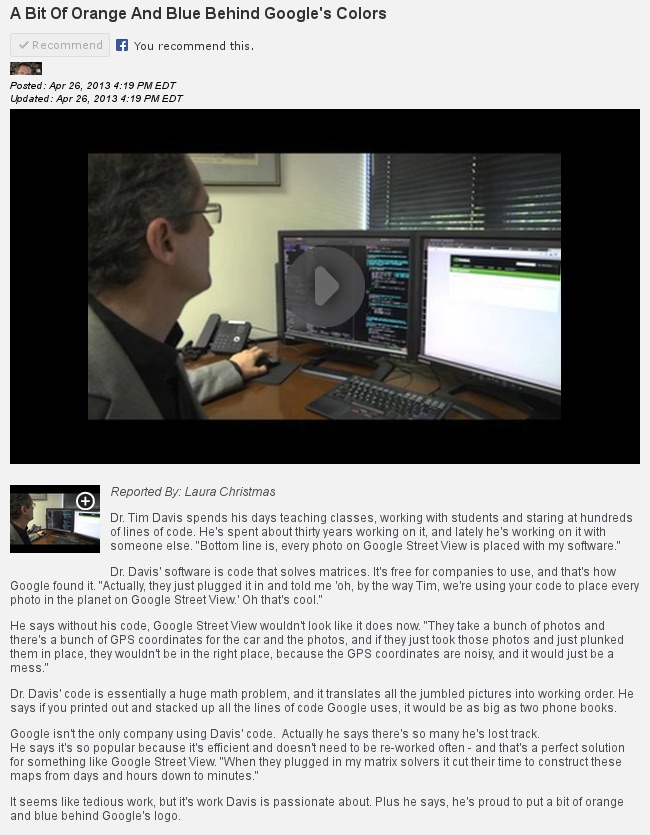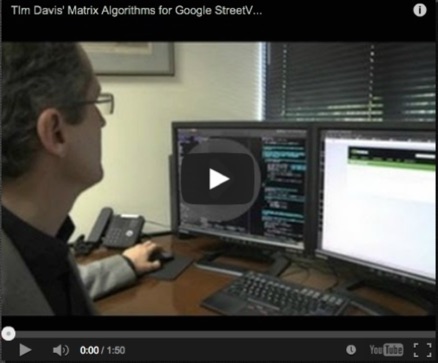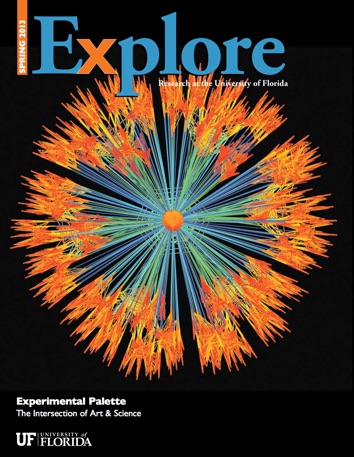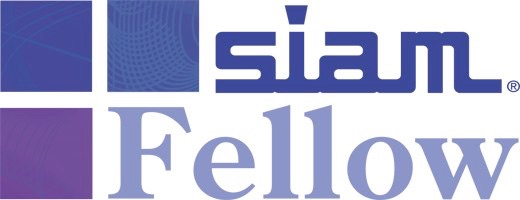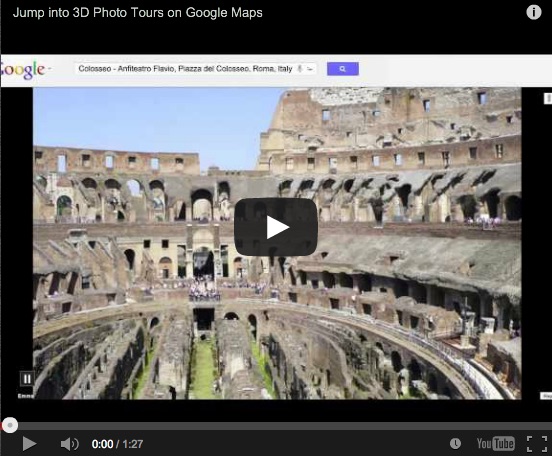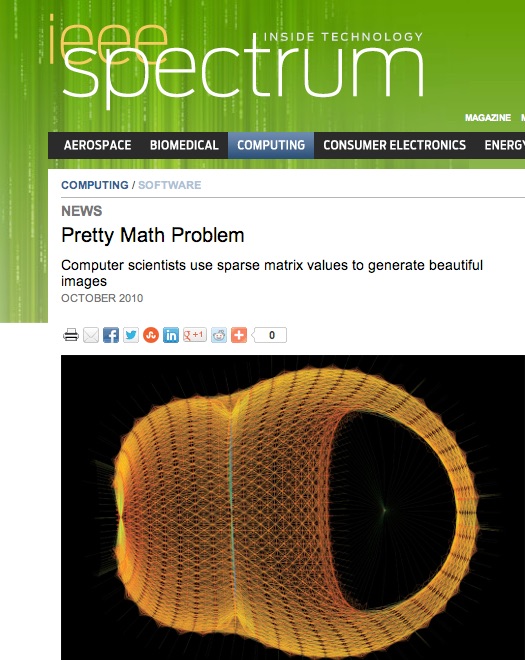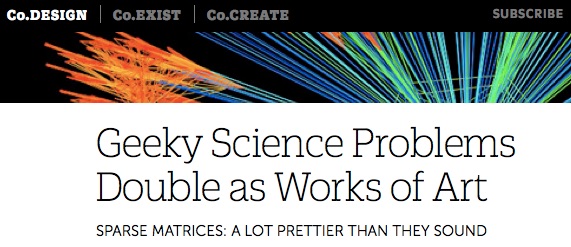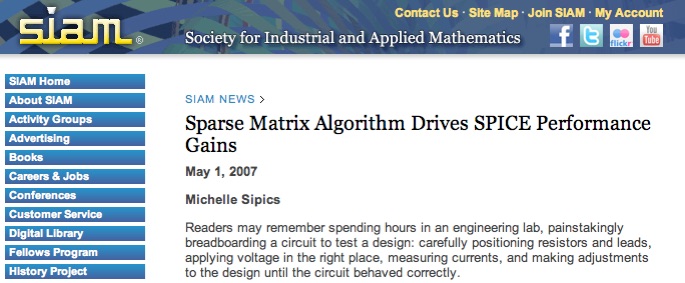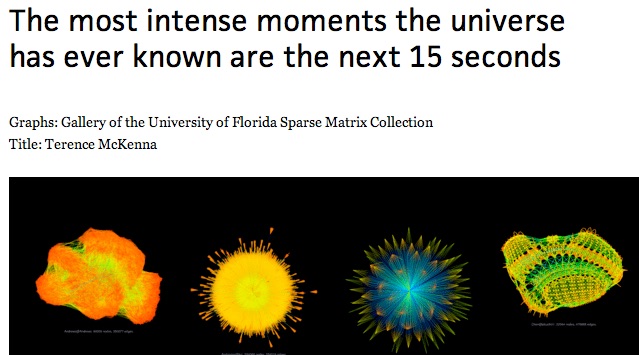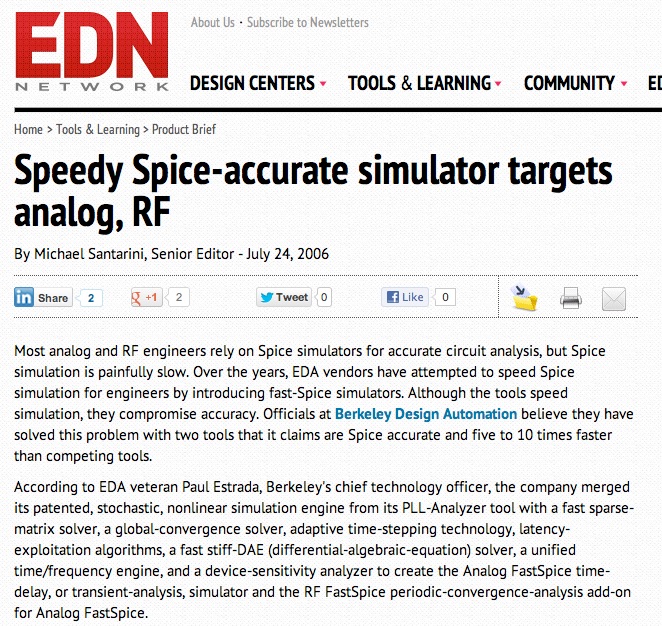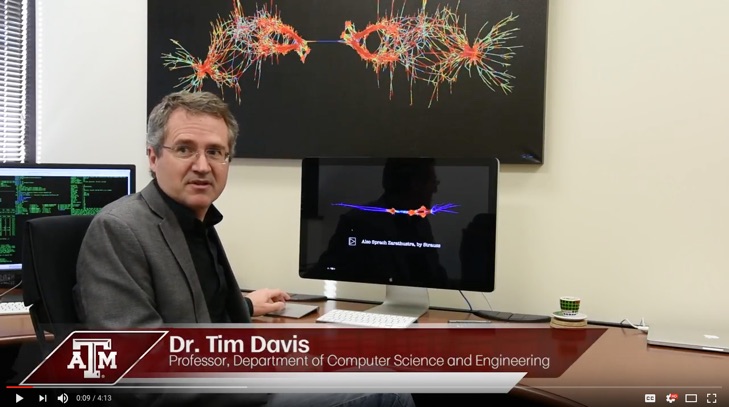news

Six computer science and engineering faculty members receive College of Engineering Faculty Awards
Texas A&M Engineering News, Feb 2, 2017
One Man’s Unforeseen Impact on Technology
Texas A&M Engineering News, Nov 1, 2016

-
-
“From Google Maps to planetary cartography, Dr. Tim Davis’ work on algorithms and software impacts our lives every single day. This research has such a vast impact on our technology-driven world, that you have likely seen the results of his work without even realizing it.”
-
...
-
“I could never have predicted the impact of my work,” Davis said. “When I started creating these matrix solvers in graduate school, I saw a problem to be solved and had no idea my solutions would be so widely used. My code is out there ‘in the wild’, being used by so many people to solve so many problems that I'm only aware of a small fraction of the ways it's being used every day. Because the code is so robust, reliable and well documented, I get very few bug reports or requests for help on how to use it, so I don't always hear from my many users.”
Davis named IEEE Fellow, Texas A&M Eng. News, Jan. 7, 2016.
Six named IEEE Fellows, Texas A&M Eng. News, Jan. 7, 2016.
-
-
“Dr. Tim Davis, professor in the Department of Computer Science and Engineering at Texas A&M University, has been named a Fellow of the Institute of Electrical and Electronics Engineers (IEEE) for his contributions to sparse matrix algorithms and software.
-
...
-
Davis is also a Fellow of the Society for Industrial and Applied Mathematics (SIAM) and the Association for Computing Machinery (ACM), making him one of the few individuals to hold all three distinctions.
-
-
‘Becoming an IEEE Fellow is an honor that brings back fond memories of my undergraduate days at Purdue when I first became a member of IEEE,” said Davis. “As an undergraduate student I relied on the SPICE circuit simulator for my circuit design projects, but the cycle has come full circle since there are now many commercial and government lab circuit simulators that rely on my sparse matrix solvers. I’m please to bring this honor to Texas A&M, which is a wonderful environment for my research.’
-
Tim Davis Recognized as ACM Fellow, Texas A&M Eng. News, Jan. 8, 2015.
ACM Names Fellows for Innovations in Computing, ACM, Jan. 8, 2015.
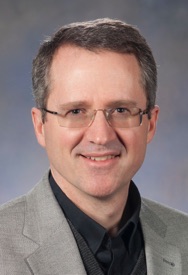

-
“Dr. Timothy Alden Davis has been named an Association for Computing Machinery (ACM) Fellow. ... Davis earned the Fellow designation for his contributions to sparse matrix algorithms and software.
-
-
Commenting on his selection as an ACM Fellow, Davis said ‘I've always loved creating algorithms and the code that makes those algorithms work. My brother, Jon, got me started in high school in 1978. Our high school didn't have a computer, so Jon got me an account on Purdue's mainframe and a book on Fortran. A year later after punching cards to solve the problems in the book, and fresh out of high school, I was working in the computer room in Purdue's Mechanical Engineering Department, helping college students with their code. I've been helping students create code, and writing my own, ever since.’
-
-
Professor Davis is recognized as a world leader in algorithmic research for sparse matrix computations. His work combines graph-theoretic methods and numerical techniques to create algorithms for solving problems in computational science that arise across a wide range of applications. He incorporates his novel theory and algorithms into robust library-quality open-source software that is widely used in industry, academia, and government labs.”
-
-
-
-
“ACM has recognized 47 of its members for their contributions to computing that are driving innovations across multiple domains and disciplines. The 2014 ACM Fellows, who hail from some of the world’s leading universities, corporations, and research labs, have achieved advances in computing research and development that are driving innovation and sustaining economic
-
development around the world. ACM President Alexander L. Wolf acknowledged the advances made by this year’s ACM Fellows. ‘Our world has been immeasurably improved by the impact of their innovations. We recognize their contributions to the dynamic computing technologies that are making a difference to the study of computer science, the community of computing professionals, and the universe of consumers and citizens who are benefiting from their creativity and commitment.’ “
Reveille VIII makes memorable visit to CSE class, Texas A&M Eng. News, Dec. 16, 2014. A&M mascot Reveille VIII pops up in class, helps with quiz, Houston Chronicle, Dec. 19, 2014.
-
“On Dec. 8, computer science and engineering Professor Dr. Tim Davis got the surprise of his life. On a take-home quiz given to his sophomore class, ‘Discrete Structures for Computing,’ the previous Friday, Davis noted that the students may not receive outside help. Just for fun, he added one exception on the quiz (click here): ‘You may request assistance from Reveille VIII. If she attends class on Monday, Dec. 8, then everyone attending class on that day gets 100 percent on this quiz. Really.’ When he walked into his classroom that day, there she was. It was a complete surprise, but he stayed true to his word.”
A shorter version of the story also appears the facebook page of Texas A&M University.


CSE announces exceptional new faculty, Texas A&M Engineering News, Oct. 14, 2014.
-
“The Department of Computer Science and Engineering at Texas A&M University is on the start of a growth period as part of the Dwight Look College of Engineering's 25 by 25 initiative. As part of this plan, we have added five tenure track faculty and two teaching-focused faculty, including our first professor of practice. We also introduce our first Texas A&M University Institute for Advanced Study (TIAS) fellow and two adjunct faculty members.”
NVIDIA adds Davis' SuiteSparse package to its short-list of high-performance libraries, Texas A&M Engineering News, Oct. 8, 2014.
-
“Dr. Tim Davis, professor of computer science and engineering at Texas A&M University, developed SuiteSparse, a software package that supports GPU-based CUDA acceleration. SuiteSparse was recently added to a very short list of software libraries maintained by NVIDIA.”
Renowned professor of computer science joining CSE faculty, Texas A&M Engineering News, July 1, 2014.
-
“Dr. Timothy Alden Davis, a world leader in algorithmic research for sparse matrix computations, will be joining the faculty of the Department of Computer Science and Engineering at Texas A&M University in the fall. Davis will be teaching courses in sparse matrix algorithms and numerical analysis.”
-
-

Sparse Matrices and the London Electronic Music Scene, March 11, 2014, SIAM Blog.
-
“Last November, sparse matrices came together with electronic music to appear on billboards around London. What do sparse matrices have in common with the electronic music scene, you might wonder? “
-
-
-
Copyright ©2013, Neighbour-UK. Used by permission.
Cleve’s Corner: Sparse Matrices, Music, and London Billboards, March 3, 2014, The MathWorks.
-
“At the recent SIAM conference on Parallel Processing for Scientific Computing, I met my friend Tim Davis. Tim is a professor at the University of Florida, a consultant to MathWorks, and author of many of the functions involved in MATLAB sparse matrix calculations. One of his hobbies involves the use of sparse matrices to translate music into visual art. ... His artwork appeared as the theme artwork for LEAF 2013, appearing on posters and billboards around London last fall.”
UF computer science professor named to prestigious fellowship, Sept 26, 2013, UF News
-
“Davis was named a Fellow by the Society for Industrial and Applied Mathematics this spring, one of only two people in Florida ever accepted to the fellowship program, and the only one at UF. He was chosen for his contributions to sparse matrix algorithms and software, and he was honored at an awards ceremony in San Diego. ... ‘ I’m very glad to bring that honor back to the University of Florida,’ he said. ... Davis also says he thinks his faith plays a part in his success.
-
‘I can’t really take the credit for this. I really believe that God equipped me to do this work,’ he said. ‘I’m just humbled by being able to see that my work gets out there and gets used.’ “
-
A Bit of Orange and Blue Behind Google’s Colors, April 26, 2013, GTN News, Laura Christmas
-
Minor correction: my comment about cutting run time was for the US Geological Survey’s use of SuiteSparse to construct maps of the moon, Mercury, Mars, and other planetary bodies.
-
-
The video of the news story is available on YouTube:
-
-
Experimental Pallette, UF Explore, Spring 2013
-
Also posted on the UF Explore web site:
Announcing the 2013 Class of SIAM Fellows, March 29, 2013
-
-
“Philadelphia, PA – SIAM is pleased to announce the newly selected Class of SIAM Fellows, distinguished members of SIAM nominated for exemplary research as well as outstanding service to the community. Through their contributions, the 2013 Class of Fellows is helping advance the fields of applied mathematics and computational science. SIAM congratulates these 33 members of our community:
-
...
-
Timothy Davis, a professor of computer science at the University of Florida, is being recognized for his contributions to sparse matrix algorithms and software, including the University of Florida Sparse Matrix Collection. His research interests are in sparse matrix algorithms, computational science, numerical methods, and applied mathematics. Dr. Davis is a SIAM book author and currently serves as a SIAM Council member. He is also on the editorial board of the SIAM Journal on Scientific Computing.”
Introducing Ceres Solver - A Nonlinear Least Squares Solver, Google Open Source Blog, Sameer Agarwal & Keir Mierle, May 2012.
“Solving non-linear least squares problems comes up in a broad range of areas across science and engineering - from fitting complicated curves in statistics, to constructing 3D models from photographs in computer vision. Today we're happy to announce the release of a solver we use at Google. Ceres Solver is a portable C++ library that allows for modeling and solving large complex nonlinear least squares problems. The notable features are: ... Sparse Cholesky factorization (using SuiteSparse) for large sparse problems ... We use Ceres Solver at Google to estimate the pose of Street View cars, aircrafts, and satellites; to build 3D models for PhotoTours; to estimate satellite image sensor characteristics, and more.”
Dr. Tim Davis Wins Google Open Source Software Award, CISE Department Press Release, May 2012.
“The CISE department is pleased to announce a recent Google open source software award ($---) given to Dr. Tim Davis on April 30, for his open source sparse matrix software. This award also gives the University of Florida easy access to Google's Summer of Code, in which undergraduate & graduate students are funded to work with mentors on open source software (http://code.google.com/soc/).”
The Harvard Advocate, Winter 2011: Blueprint, Vol 146, Issue 2, pp. 42-43.
Pretty Math Problem, IEEE Spectrum, October 2010.
“You're looking at the solution to a computational fluid dynamics problem. It is one of thousands of math-based artistic renderings stored in a database maintained by computer scientists from the University of Florida, in Gainesville, and AT&T Labs Research, in Florham Park, N.J.”
Geeky Science Problems Double as Works of Art, Suzanne LaBarre, FastCoDesign.com, Aug 27, 2010.
“The work you see here is so pretty, you'd hardly guess it's the product of some of the world's biggest math nerds.”
Sparse Matrix Algorithm Drives SPICE Performance Gains, Michelle Sipics, SIAM News, May, 2007.
“Tim Davis, an associate professor of computer science at the University of Florida, has developed a high-performance algorithm for factoring matrices arising in circuit simulation. He presented some of the underlying background in an invited talk in Boston last summer at the SIAM Annual Meeting. The algorithm has been implemented in several versions of SPICE, both commercial and open-source. ... One notable implementation of KLU is in Xyce, Sandia National Laboratories' version of SPICE. ... ‘Xyce with KLU has been used to perform critical variability studies wherein hundreds of versions of Xyce are run, in serial on a parallel computer cluster,’ says Scott Hutchinson, manager of electrical and microsystems modeling at Sandia. ‘The KLU solver's improved performance ... [has decreased] the linear solution times anywhere from 20% to an order of magnitude as the problem size increases.’”
The most intense moments the universe has ever known are the next 15 seconds, But does it float.com, catalogued under generative art, by Folkert and Atley.
Speedy Spice-accurate simulator targets analog, RF, Michael Santarini, Senior Editor, EDN, July 24, 2006.
American Scientist, First Person: Tim Davis. June 2019
-
Recognized internationally for his innovative algorithms and software, Tim Davis’s research has been applied in a vast range of real-world technological and social applications, from MATLAB to Google Street View, from aiding the FBI to creating original art. He is the recipient of the 2018 Sigma Xi Walston Chubb Award for Innovation, an annual award established in 2006. Previous awardees include engineer Akhlesh Lakhtakia, computer scientist Rosalind W. Picard, and materials scientist Stan Ovshinsky, among others. American Scientist’s digital managing editor, Robert Frederick, spoke with Davis about the software tools he creates, which he describes as “mathematical monkey wrenches,” some of which he has used to create artworks based on music.


-
“Timothy A. Davis is a Professor in the Computer Science and Engineering Department at Texas A&M University. Davis creates algorithms and software for solving large sparse matrix problems that arise in a vast range of real-world technological and social applications. ...
-
-
In an abstract for GraphBLAS, a project you're currently working on, you indicated that the project has the potential for creating a transformative shift in how graph algorithms are expressed. Will you explain this?
-
-
“GraphBLAS is a community effort, including industry, academics, and government labs, that is working to design a library that can implement graph algorithms based on sparse linear algebra over semirings. ... Writing graph algorithms in the language of sparse linear algebra over semirings, instead of nodes and edges, is what has the potential for transforming how we reason about and create graph algorithms. The vision of the GraphBLAS.org community is to make that a reality.” “
-
RedisLabs company blog, May 23, 2018
-
“The Redis modules announcement included ... changes to the architecture of the Redis Graph module that utilize GraphBLAS technology for even greater efficiency in execution. Prof. Tim Davis of Texas A&M University, the creator of GraphBlas, explained the sparse matrix multiplication algorithms behind GraphBLAS while Roi Lipman from Redis Labs laid out the usage of GraphBlas supercharges Redis Graph to outperform other graph databases by up to 100x.” [caveat: I’m the creator of SuiteSparse:GraphBLAS, currently the only full reference implementation of GraphBLAS. I’m not the author of the GraphBLAS standard itself.]
The talks on RedisGraph are on YouTube; see the links below:
Engineering Faculty and Staff Award Winners Recognized.
Texas A&M Engineering News, May 14, 2018
Texas A&M Spirit Magazine, Summer, 2017
Using an algorithm that converts songs into artwork, a professor in the Department of Computer Science and Engineering created this visual representation of the Aggie War Hymn.
Seeing Sound: A&M Professor Creates Electronic Art with Music
The Battalion, Texas A&M University, Mar 20, 2017
-
Sparse matrix algorithms are behind many of the everyday tools used by people around the world. They are used in Google Street View, Google Earth, engineering simulations, financial markets and power systems. Tim Davis, A&M professor in computer science and engineering and a renowned expert in sparse matrix computations and creator of SuiteSparse, found another use: Creating works of electronic art by visualizing music.
Art and Math Collide to Create Visible Songs
Texas A&M Today, Feb 8, 2017
Seeing songs: algorithms covert songs into something that can be seen
Texas A&M Engineering News, Jan 30, 2017
-
“When you think of art, mathematical algorithms may not be the first thing that comes to mind. Dr. Tim Davis set out to show the world that mathematics can, in fact, be beautiful. He is merging the two disciplines by crafting algorithms that convert songs into something you can actually see. Davis, a professor in the Department of Computer Science and Engineering at Texas A&M University, is the creator of SuiteSparse, the widely-used package of sparse matrix algorithms.



